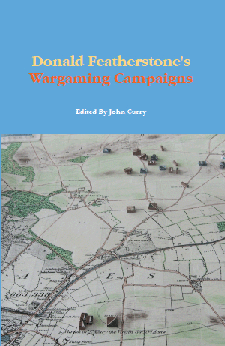The History of Wargaming Project
The project aims to make the largest possible collection of wargaming books and rules available to the modern reader. Ranging from second editions of wargaming classics, to professional wargaming rules used by the military and innovations in current wargaming.

|
|
Recreational Wargaming...Donald Featherstone

|
Donald Featherstone's Wargaming Campaigns
12 March 2014 by Donald Featherstone Edited by John Curry |
|---|---|
|
Donald Featherstone's War Game Campaigns was the first wargaming
book to deal with the art of creating a series of related battles and
linking them into campaigns for the modern enthusiast. This book covered
straightforward methods of setting up and running such campaigns. It
deals with topics ranging from map making, to attrition to the issue of
smaller forces delaying larger ones.
Included are twenty-one examples of wargaming campaigns, covering periods from the Dark Ages to World War II. Each campaign was specially chosen by Don to illustrate different aspects of such games and options for the wargamer to consider. This book was originally published under the title of 'War Game Campaigns'. The book contained 29 chapters including: Strategic Napoleonic Wargaming; Refighting the Peninsular War; The Viking Raid; A Napoleonic Corps; Campaign; Boer Revolt; Landing in Force (1944) and Guards v Grenadiers (1944).
|
|
|
Notes: The Apachie uprising campaign game mentions squares, but does not show these on the map. However, Don used the map to represent 4 wargames tables by 4 tables on his map games, so they were normally 20 squares by 28 squares. Each table was then notionally 5 by 7 squares.